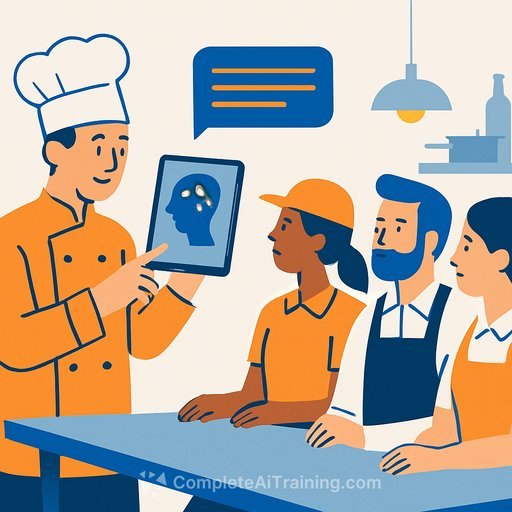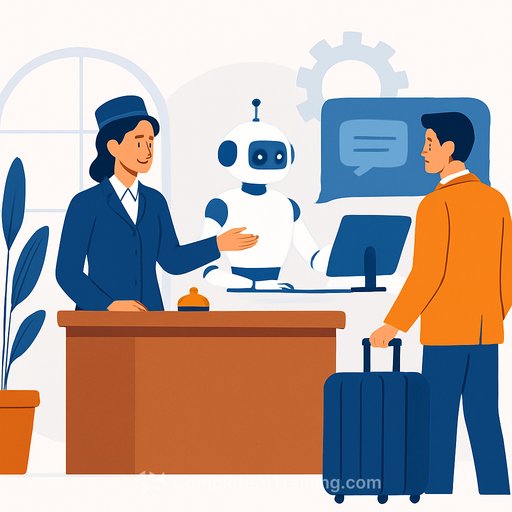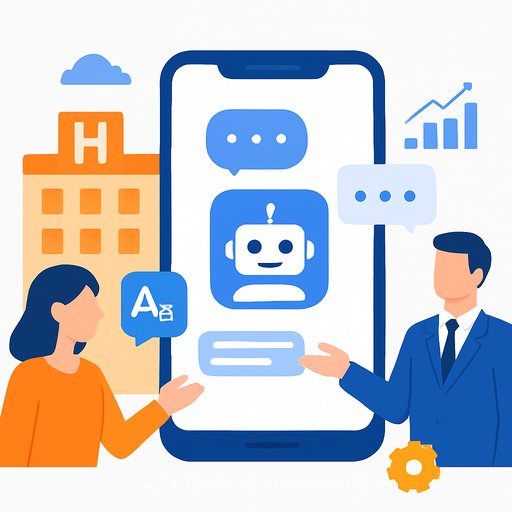The Restaurant AI Playbook: Your Essential Guide to Smart Hospitality in 2025 & Beyond
AI isn't on the horizon. It's already in your kitchen, your schedule, and your guest messaging. Nearly 70% of operators are exploring or deploying AI tools right now. The real question: how do you make it pay off without creating chaos?
Here's a clear, practical playbook built for hospitality and events professionals who need outcomes, not buzzwords.
Why now matters
Operators using AI at scale report 30-50% less food waste, 10-20% lower labor costs, and 15-25% better inventory turnover. That's margin you can feel. It also delivers the personalized, efficient service guests expect.
With labor shortages and rising costs, the timing is simple. Smart scheduling alone can save managers 8 hours a week and trim monthly labor overages by about $1,200. It's not theory. It's operational leverage.
What AI looks like in your operation
Smart scheduling that actually works
Labor platforms use sales history, local events, and weather to forecast demand and build schedules that cut overtime while keeping coverage tight during spikes. Tools like 7shifts and Fourth are built for this specific use case.
Case study: A regional burger chain used AI-powered demand forecasting to cut weekly food waste by $2,500 and reduce overtime by 18% over six months, while increasing net promoter scores by 15 points.
Inventory and waste intelligence
Forecasts tell you what to prep, how much to order, and where waste is creeping in. Expect cleaner par levels, better cross-utilization, and fewer "86'd" items.
Result: tighter cost of goods, fewer emergency orders, and more consistent guest experience.
Menu engineering and pricing
AI can cluster items into stars, sleepers, and margin drivers, then model pricing or portion changes before you make them. Use it to plan seasonal menus, test bundles, and protect margin without shocking regulars.
Guest engagement that feels personal
From reservations to loyalty, AI segments guests by visit patterns and preferences. It automates targeted offers, upsells likely add-ons, and smooths demand with off-peak incentives.
Keep it human: clear opt-ins, simple unsubscribe, and offers that match intent.
Training and onboarding assistants
Turn your SOPs into a searchable assistant. New team members get instant answers; veterans get faster refreshers. Add multilingual prompts for BOH and FOH to reduce errors during rush.
Quick wins vs. big bets
- Quick wins (30-60 days): AI scheduling, prep lists from forecasts, no-show risk scoring for reservations, automated invoice coding, nightly sales summaries for managers.
- Big bets (90-180+ days): Voice AI for phone orders or drive-thru, dynamic menu pricing by daypart, computer vision for inventory and line checks, kitchen display optimization tied to forecasted fire times.
A simple 6-step rollout
- 1) Set outcomes. Pick 2-3 targets: reduce waste by 20%, cut overtime by 15%, lift NPS by 5 points, reduce guest wait by 3 minutes. Get a clean baseline.
- 2) Clean your data. Map POS items correctly, finalize recipes and yields, standardize clock-in rules, verify vendor SKUs. Bad data kills ROI.
- 3) Pilot one use case for 60-90 days. Choose a controllable unit. Define the workflow, the approval steps, and what "good" looks like.
- 4) Train people, not just software. Document the new daily rhythm. Add "human-in-the-loop" checkpoints. Nominate a site champion.
- 5) Measure weekly. Forecast accuracy, labor variance, prep vs. sales variance, guest feedback. Adjust, don't guess.
- 6) Scale with guardrails. Roll out in waves. Keep audit logs, permission levels, and privacy standards in place.
Vendor checklist (use this before you sign)
- Connects to your POS, scheduling, inventory, and accounting
- Forecasts using history, events, and weather data
- Human-in-the-loop approvals for sensitive actions
- Clear audit trails and role-based access
- Mobile-first workflows for managers and shift leads
- Security and compliance (SOC 2, GDPR/CCPA where applicable)
- Transparent roadmap and support SLAs
- Time-to-value under 30 days for the first use case
KPIs that prove it's working
- Waste: dollars and % reduction per week
- Labor: overtime hours, labor % vs. sales, schedule adherence
- Forecast accuracy: item-level and daypart-level
- Inventory: turns, stockouts, emergency orders
- Guest: NPS, wait time, check growth, repeat rate
- Adoption: % of managers using the workflow as intended
Simple ROI math: (Waste savings + labor savings + revenue lift - software + training time) ÷ software + training time. If it's not positive in 90 days, rethink the scope or switch vendors.
Pitfalls to avoid
- Automating a broken process instead of fixing it first
- Rolling out too much too fast across every unit
- Ignoring frontline feedback and change management
- Relying on default settings and never tuning the model
- Weak data hygiene that leads to "garbage in, garbage out"
- Privacy shortcuts that risk guest trust
For hospitality and events teams
Banquets and large events benefit the most. Forecast based on ticket scans, block bookings, and weather to set staff counts, prep volumes, and delivery windows. Push pre-orders for VIP or corporate groups to stabilize production and reduce last-minute churn.
Use AI to optimize floor plans and timelines by guest mix and service style. In BOH, tie batch prep to arrival curves and equipment constraints to avoid bottlenecks when the first wave hits.
30-day action plan
- Week 1: Pick one use case and one location. Baseline waste, labor, NPS. Clean item maps and recipes.
- Week 2: Connect POS and scheduling. Turn on forecasting. Run side-by-side with your current process.
- Week 3: Move to AI-informed scheduling and prep lists with manager approval steps. Coach shifts daily.
- Week 4: Review KPIs, document wins and misses, and decide: scale, tweak, or pause.
Tools to explore
- Labor forecasting and scheduling: 7shifts, Fourth
- Inventory and waste analytics: platforms that integrate with your POS and vendors
- Guest engagement: CRM and messaging that segment by visit pattern and spend
- Training assistants: SOP-based tools for quick onboarding and shift support
Level up your team
If you need structured, role-based upskilling for managers and operators, explore practical programs at Complete AI Training - Courses by Job. Keep the focus tight: one use case, one KPI, one rollout playbook.
Bottom line
AI pays when it's aligned to a clear operational goal, wired into your data, and owned by your managers. Start small, measure weekly, and scale what works. That's how you turn tech into margin-and service into loyalty.
Your membership also unlocks:






